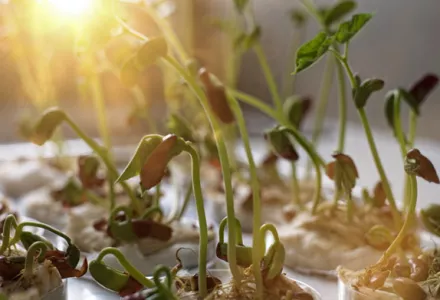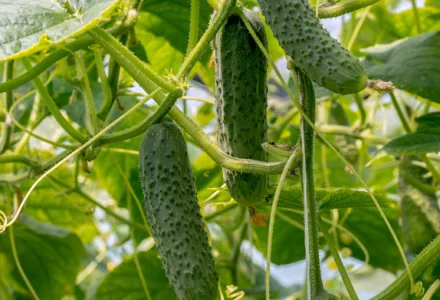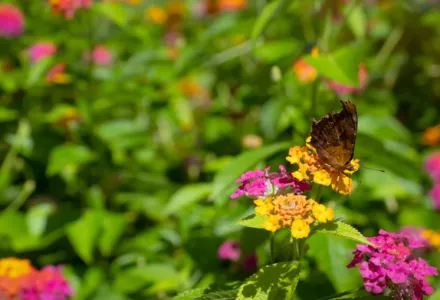In plant growth regulators - part 1 we read plants do have – so-called ‘plant growth regulators’ (PGRs). These molecules influence the development of the plant and when they occur in the plant in a natural way, they are known as phytohormones or plant hormones. And that is exactly the theme of this part, we take a look at cytokinins, ethylene, gibberelins and the functions of gibberelins.
What are Gibberelins?
Gibberelins are phytohormones which are partly responsible for cell division and the elongation of stems and other tissues. They were discovered by Japanese researchers studying a disease in rice. The disease caused recently germinated seedlings to acquire a yellowish color and the stem to elongate excessively, leading to the death of the plant. The researchers discovered that these symptoms were caused by the Gibberella fujikuroi fungus. This fungus produces a large quantity of these phytohormones which are introduced into the host plant.
Since then, various types of gibberelins have been discovered and isolated. These were given successive numbers as they were discovered; GA1, GA2, GA3, etc. GA3 is gibberellic acid.
Gibberelins are synthesized mainly in meristematic organs and developing tissues.
Seed germination
In seeds, some of the gibberelins combine with glucosides, and become inactive in this form. During germination, enzymes destroy this combination and the gibberelins are unlocked and activated. This stimulation of germination has been demonstrated in a number of experiments which showed how the application of gibberelins accelerated the germination of lettuce seeds. It was also shown that exposure to light accelerated the germination of lettuce seeds. Later studies showed that light accelerates the transformation of the gibberelins from the inactive conjugated form to the active form.

Sex expression
In species with unisexual flowers - that is, separate male and female flowers, either on the same plant (monoecious) or on different individuals (dioecious) - gibbberelins appear to have a regulatory effect on sex expression. For example, the application of gibberelins in female asparagus plants produces the appearance of male and hermaphrodite flowers. By contrast, gibberellin application in maize plants produces the appearance of female flowers in the tassels (masculine inflorescences).
Influence during the juvenile period
Juvenile plants are different to adult plants - for example, developing fruit trees must mature for several years after seed germination before they are capable of producing flowers and fruits. In some cases they also have different characteristics when adult (for example, the presence of spines or leaves with different shapes). Gibberelins play an important role in the transition from the juvenile period to the adult period. In some plants, such as ivy, the exogenous application of gibberelins produces the expression of branches with juvenile characteristics.
Fruit set
As with auxins, gibberelins stimulate fruit set in some species.
Induction of flowering
Some plants require long days or cold periods to flower, but the application of gibberelins induces flowering independently of the photoperiod or the temperature.
Cytokinins
The discovery of these phytohormones was due mainly to in vitro cultivation studies. The first observation was that “coconut milk” (the endosperm of the fruit) promoted the growth of several tissues cultivated in vitro.
The first natural cytokinin isolated and identified was named zeatin, since it was isolated from maize (Zea mays) seeds.
The main function of the cytokinins is to produce cell division and retard senescence. As mentioned above, cytokinins in combination with auxins lead to the formation of undifferentiated cell masses called calluses. They also stimulate the development of lateral apices when applied exogenously, breaking apical dominance
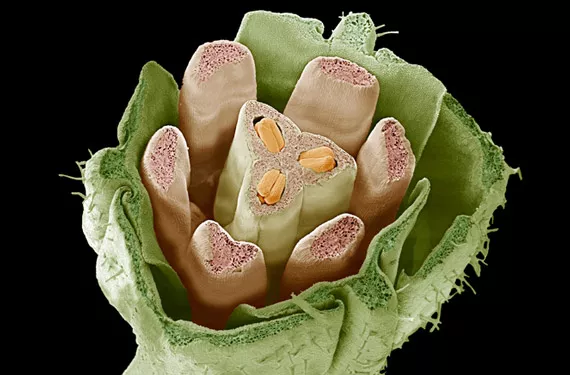
Ethylene
Ethylene is a simple hydrocarbon that is a gas under normal conditions. The effects of ethylene on plants was discovered when streets were illuminated with carbide lamps. The combustion process led to the emission of ethylene and the leaves of trees near these lamps turned yellow and were shed.
The main function of ethylene is on fruit maturation and the senescence of leaves and flowers. In species with climacteric fruit, maturation is induced by an increase in this hormone. It is also responsible for the change in color of some non-climacteric fruits (that is, fruit whose maturation is not affected by ethylene), as occurs in citrus fruit. Ethylene is used to mature fruit that has been collected prematurely. It is applied by burning in closed chambers or with ethephon, a product which decomposes into ethylene when hydrolyzed in the plant.
Another function attributed to both ethylene and gibberelins is the regulation of sexual expression in dioecious plants. The application of ethylene in asparagus induces the appearance of female flowers in male plants.
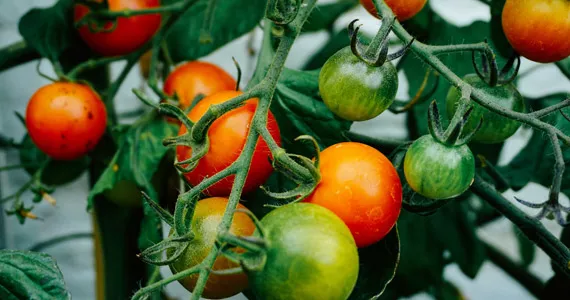
Ethylene plays an important role along with jasmonic acid in stimulating the production of substances that protect the plant from biotic and abiotic stresses.
Abscisic acid (ABA)
As the name indicates, this hormone is directly implicated in the senescence and abscission of leaves, flowers and fruits. It also affects the latency of some seeds.
As in the case of ethylene, this phytohormone induces the expression of resistance genes for a number of stresses. One effect of ABA is to produce stomatal closure during drought conditions, thus preventing dehydration in the plant.

